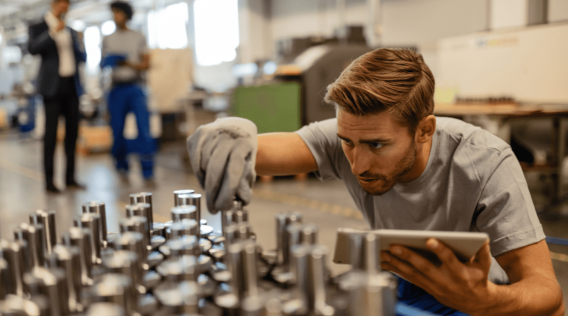Aluminum Machining: Enhancing Precision and Efficiency
Introduction:
Aluminum is a widely used material in various industries due to its excellent properties such as lightweight, high strength, corrosion resistance, and good thermal conductivity. The demand for aluminum components in industries like aerospace, automotive, and electronics has increased significantly in recent years. To meet this demand, manufacturers have turned to advanced machining techniques to enhance precision and efficiency in aluminum machining processes. This article explores the various methods and technologies employed in aluminum machining to achieve superior results.
1. Traditional Machining Techniques:
a. Turning: Turning is one of the most common machining processes used for aluminum. It involves rotating the workpiece while a single-point cutting tool removes material to create the desired shape. Turning can be performed on both manual and CNC machines, providing flexibility in terms of complexity and batch size.
b. Milling: Milling is another widely used machining technique for aluminum. It involves removing material from the workpiece using rotating cutting tools. High-speed milling, which utilizes high spindle speeds and feed rates, is particularly effective in achieving precise and efficient results.
c. Drilling: Drilling involves creating holes in the aluminum workpiece. This process can be done using various drilling tools, including twist drills, gun drills, and center drills. Advanced drilling techniques such as peck drilling and step drilling are employed to optimize efficiency and accuracy.
2. Advanced Machining Technologies:
a. CNC Machining: Computer Numerical Control (CNC) machining has revolutionized the aluminum machining industry. CNC machines use computer-aided design (CAD) and computer-aided manufacturing (CAM) software to control the machining process accurately. CNC machines offer precise control over cutting parameters, resulting in high-quality finished products.
b. 5-Axis Machining: 5-axis machining allows for simultaneous movement of the cutting tool in five different axes. This capability enables complex geometries and contours to be machined with a high degree of precision. By reducing the number of setups required, 5-axis machining enhances efficiency and reduces production time.
c. High-Speed Machining: High-speed machining involves using increased spindle speeds and feed rates to remove material rapidly. This technique is particularly effective in aluminum machining due to the material\’s low tensile strength. High-speed machining reduces machining time and improves surface finish, enhancing overall efficiency.
3. Cutting Tools and Tool Coatings:
a. Carbide Tools: Carbide cutting tools are commonly used in aluminum machining due to their high hardness and wear resistance. These tools can withstand the high cutting temperatures generated during machining and maintain their sharpness for extended periods.
b. Diamond-Coated Tools: Diamond-coated cutting tools provide superior wear resistance and allow for high-speed machining of aluminum. The diamond coating reduces friction and heat generation, resulting in improved tool life and surface finish.
c. PCD Tools: Polycrystalline Diamond (PCD) cutting tools are highly effective in aluminum machining. PCD tools combine the hardness of diamond with the toughness of carbide, offering excellent wear resistance and prolonged tool life.
Conclusion:
Aluminum machining requires precision and efficiency to meet the increasing demand for aluminum components. Traditional machining techniques like turning, milling, and drilling, when combined with advanced technologies such as CNC machining, 5-axis machining, and high-speed machining, enable manufacturers to achieve superior results. Cutting tools like carbide, diamond-coated, and PCD tools further enhance the machining process, providing excellent wear resistance and improved surface finish. By incorporating these methods and technologies, manufacturers can effectively enhance precision and efficiency in aluminum machining, meeting the growing demands of various industries.
-

- Magnesium alloy bike parts & componenets for kid’s push bike
-

- Popular Children’s Sports Bicycle High Quality Children’s Balance Bike Children’s Bicycle
-

- OEM die-casted parts& components
-

- OEM high pressure die casting magnesium alloy frame for bicycle
-

- Bicycle Freehub 12/14/16 Inch Children Bike Low Rider Bikes Magnesium Aluminum Alloy Children Bicycle 3-8 Years Old In Stock
-

- Magnesium alloy Thixomolding parts for oxygen suction machine housing

 0086-750-5616188
0086-750-5616188 +86 13392089688
+86 13392089688 sales@zhongmei-tech.com
sales@zhongmei-tech.com







